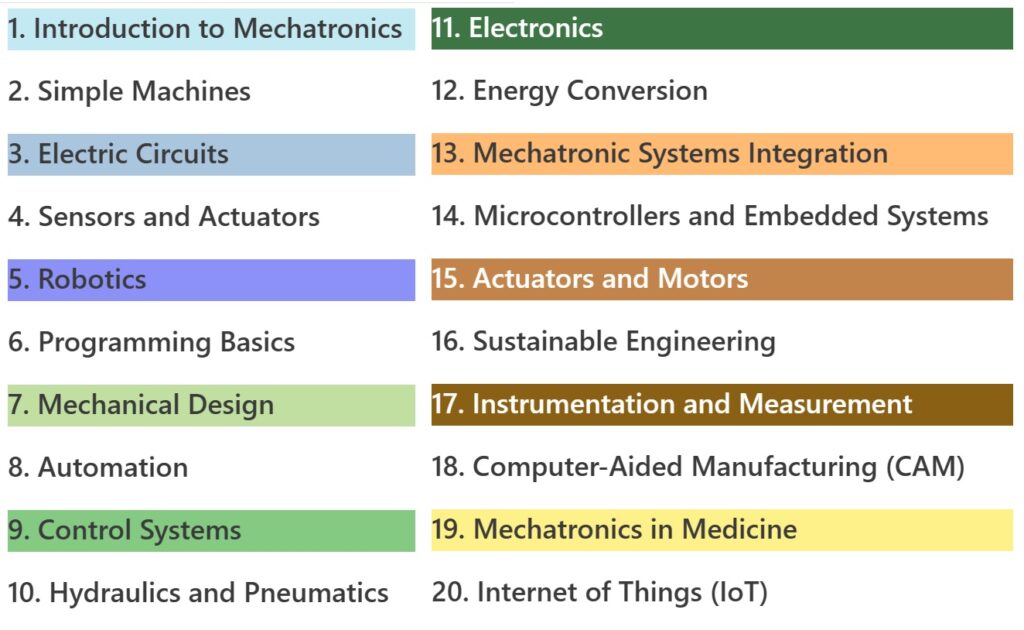Click the simple table below to be take to the FULL COURSE OVERVIEW

To complete this lesson you have READING, VIDEO, QUESTIONS, and A HANDS ON PROJECT
How Levers, Pulleys and Gears Work
Simple machines include pulley systems, which are often overlooked in their simplicity, and have been integral to human civilization for centuries. These ingenious devices have facilitated everything from lifting heavy loads to powering complex machinery. Let’s delve into the history of pulley systems, explore their mechanics, and discover their practical applications in everyday life.

History of Pulley Systems:
The history of pulley systems dates back to ancient times. Historians believe that the ancient Mesopotamians were among the first to utilize rudimentary pulleys around 1500 BCE. These early pulleys were typically made of wood or metal and were used to lift water from wells or to hoist heavy objects during construction projects.
The concept of pulleys spread throughout the ancient world, with civilizations like the Egyptians, Greeks, and Romans incorporating them into various aspects of daily life and infrastructure. Pulleys played a crucial role in the construction of monumental structures such as the pyramids and aqueducts, showcasing their importance in ancient engineering.
Types of Simple Machines:
Before we delve deeper into pulley systems, let’s briefly touch upon the six types of simple machines:
- Lever
- Wheel and axle
- Pulley
- Inclined plane
- Wedge
- Screw
Each of these simple machines serves to make work easier by altering the force needed to accomplish a particular task.
How Pulleys Reduce Effort:
A pulley is a wheel with a groove around its circumference, over which a rope or belt passes. When a force is applied to one end of the rope, it causes the pulley to rotate, lifting or moving the load attached to the other end of the rope. Pulleys reduce the effort needed to lift an object by distributing the force over multiple ropes and pulleys. This redistribution of force allows for the use of less effort than would be required in a direct lift.
Mechanical Advantage:
Mechanical advantage refers to the ratio of the output force produced by a machine to the input force applied to it. In the case of pulleys, mechanical advantage is gained by increasing the distance over which the force is applied, or by using multiple pulleys in a system. By increasing mechanical advantage, pulley systems make it possible to lift heavier loads with less effort.

Examples of Pulleys in Everyday Life:
Pulleys are ubiquitous in modern society, often found in various applications:
- Window blinds: Pulleys are used to raise and lower window blinds, making it easier to adjust the amount of light entering a room.
- Exercise equipment: Many exercise machines utilize pulley systems to provide resistance, allowing users to build strength and endurance.
- Flagpoles: Pulleys are commonly used to raise and lower flags, enabling effortless display and removal.
- Construction cranes: Large construction cranes employ complex pulley systems to lift and maneuver heavy materials on construction sites.
In conclusion, pulley systems, with their rich history and versatile applications, continue to play a vital role in simplifying tasks and improving efficiency across various industries and everyday activities. Whether lifting heavy loads or adjusting the blinds in your home, pulleys are a testament to the enduring ingenuity of human innovation.
Hands on Project for this Lesson
Create a simple lever or pulley system. There are an abundance of videos or articles across the internet to choose your project from.
Questions
- What are the six types of simple machines?
- How does a pulley reduce the effort needed to lift an object?
- What is mechanical advantage?
- Can you identify examples of pulleys in everyday life?
- Research Question: Investigate how ancient civilizations used pulleys.
Buy me a Coffee
I would be honoured if you’d buy me a digital coffee to express your thanks for this Mechatronics Course I’ve put together to help eager minds excel in their knowledge, learning and success.
Your kind donation makes it possible for me to continue creating amazing content and fulfil my dream of keeping the majority of what I make FREE and Ad FREE!!!
Thank you from the bottom of my heart, and abundant blessings to you!

Join students and professionals
from across the world increasing their knowledge of Electrical Engineering.
One email at a time
We never send spam or give your information to anyone, Privacy Policy here.



